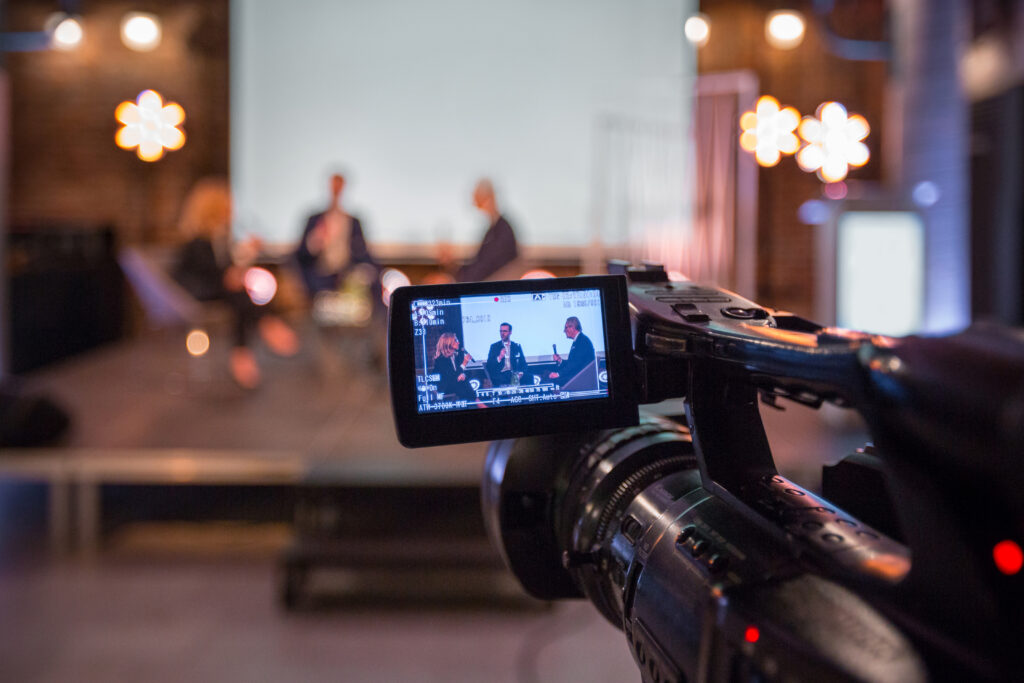We’re not going back, we’re moving forward
It’s one of those things that happens without you really realizing it: “Back in the day…” becomes something that you use to describe things that happened to you in your life, rather than something that happened before you were around. More and more, you find yourself referring to things that happened in your own lifetime as “back in the day.” It’s very Circle of Life stuff, and Disney should probably write a song about it.
For me, it’s happening a lot these days, and it’s due largely to the re-emergence of hybrid events as a hot topic. A decade ago, I was extremely lucky to be around the early pioneers of hybrid events, and I saw early on the benefits they could provide, including expanded audience, increased accessibility, creating connections between people in locations around the world, and serving as a tool to promote and encourage people to attend in person. Almost all the hard-learned lessons from those early days still stand as best practices today, and I’ve been singing those praises since then
Return of the Myths of Hybrid
Unfortunately, almost all the myths of hybrid events are still live on as well: “Hybrid events are much more technically complicated.” “Hybrid events aren’t as secure as in-person events.” “Hybrid events will cannibalize your in-person attendance.” “Hybrid events are twice as expensive as in-person events, if not more.”
We’ve touched on rejoinders to the first three before, and they range from “that’s not exactly true” to “liar, liar, pants on fire.” For example, the pre-pandemic data on in-person attendance showed that fully 86 percent of events that added a remote audience saw either the same—or greater!—in-person attendance. And while I think there will definitely be a redistribution in the types of event popularity (in-person, broadcast, hybrid, or digital-first) in our post-Covid world, and in the short term people may choose to stay home in greater numbers, I see no reason that hybrid events won’t continue to be an effective way to grow your in-person audiences.
Read More: What Hybrid Platform Consolidation Means for Meeting Profs
The myth I’d like to talk about now is the budget myth. On the less-alarming side, I’m hearing people say you need to set your AV and technology budget 50 percent higher. On the more discouraging side, that hybrid events are double or even triple the cost.
It’s easy to glom onto these types of succinct statements because we all want an easy answer. “Oh, add 50 percent to my tech budget? OK, we can probably swing that.” Or: “Oh, it’s going to be double the cost? No way can we cover that.” And let’s be real—the assertion you choose to believe may well depend on your personal belief about the value of remote audiences and digital events.
And, of course, the real answer (get ready to clink your glasses if you’ve taken my classes) is: “It depends.” As usual, the truth is more nuanced, so let’s dig into the things we need to consider when planning a budget for a hybrid event.
Venues and Platform Budgets: Zero to Gazillions

The first thing that drives me nuts about these types of statements is that they assume adding a hybrid component and overall AV and technology budgets are somehow correlated and locked in a linear fashion: that an event that spends $75,000 on AV will have to spend an additional $37,000 to add a remote audience; and that an event that spends $1,000,000 on AV will have to spend $500,000.
It simply doesn’t work that way.
Just as an in-person event can take place in a cornfield for free, or in the very pricey ballroom of The Ritz off Central Park, costs can vary wildly depending on your venue, and your choice of an in-person venue depends greatly on your audience. Likewise, adding a hybrid component to your event can range from basically free to hundreds of thousands of dollars, depending on what you’re trying to accomplish. If it’s a simple live feed with basic feedback capabilities, it can be done on Zoom for next to nothing, and the experience could range from functional to “heckuva lotta fun” with the right creative design.
Read More: Venues Step Up to Aid Meeting Planners in Safe Return
If you want to go with a more established platform, you can get something really nice in the $25,000-$50,000 range. Let’s be honest: Plenty of online platforms can go even higher than that, in the range of $250,000 to $300,000. Don’t have the budget for that? No problem. Not every in-person event can be done for free, and not every in-person event can afford The Ritz, but that doesn’t mean there aren’t plenty of venues in between. Same goes for our digital venues.
Myth debunked: Pricing is a range, not a fixed percentage of overall budget.
No Going Back

The bigger trap many planners seem to be falling into is the idea that we’re “going back” to in-person events. Reality couldn’t be further from the truth.
Some of the biggest advantages of online events over the last year came in the form of budget savings: no coffee, no muffins, no transportation, no hotel, no shipping (though anyone who knows me knows that from early 2020 I was yelling from the rooftops not to eliminate those budgets, but to reallocate them to make your digital events better). Those savings aren’t going away as we start to reincorporate our in-person audiences. The reality is, while a lot of folks can’t wait to get back to in-person events, many people (or their companies) aren’t quite ready for them to do so. As a result, these last few months have seen in-person audiences outweighed by their digital counterparts.
In other words, your in-person events won’t be as big anytime soon.
As a result, you won’t have to spend as much on coffee, muffins, transportation and the rest. And your venues won’t have to be nearly as large. If you spend half as much as you would have on all those budgets, it can more than make up for what you’ll need to add in for a successful hybrid event.
This is by far the No. 1 budgeting mistake I’m seeing people make right now: going back to their pre-2020 budgets for all of these line items, and spending pennies on the digital audience they’ve built up over the last year.
Be realistic about where your primary audience is.
No Fate but What You Make
Ultimately, it comes down to choices, doesn’t it? An event that is fully enclosed in a convention center and hotel is one thing, and it requires a certain amount of staffing and budget. Adding even a single off-site dinner or experience adds complexity and cost—and may require additional staff to make sure everything is set up and ready to go when attendees arrive—but it can also add tremendously to the overall experience.
Similarly, giving attendees the ability to join remotely can increase complexity and staffing requirements but can provide an invaluable bridge to your organization, or an on-ramp to your in-person events.
Hybrid events, though, are much more than just live streaming to remote attendees. They can include adding remote audience locations around the world, such as a primary event in New York City, with satellite events in Amsterdam, Prague and Singapore. That’s a whole different beast, with a whole different budget.
And it’s one that can’t be explained in simple percentages.
7 Questions for Hybrid Event Tech Partners

“The infusion of technology into every aspect of our daily lives means all events are hybrid,” declares Dana Freker Doody, vice president of marketing and communications with the community software platform JUNO. She predicts the future of work and events is migrating to a digital-first mindset.
But how do meeting professionals get from here to there? As part of a planning workbook appropriately titled “All Events are Hybrid,” she shared seven questions event organizers should ask their event-tech partners.
1. Does your digital platform allow for interaction between on-site and online participants?
2. Does your platform create exhibitor matches across environments?
3. How are digital poster halls structured and displayed online and on site?
4. Does your companion app help those attending in person find better matches?
5. Can cohorts or teams be set up to perform challenges across in-person and virtual attendees?
6. Will your app support introverted learners on site with chat and Q&A?
7. Does your solution support future needs in your organization-wide digital strategy?
–JT Long





